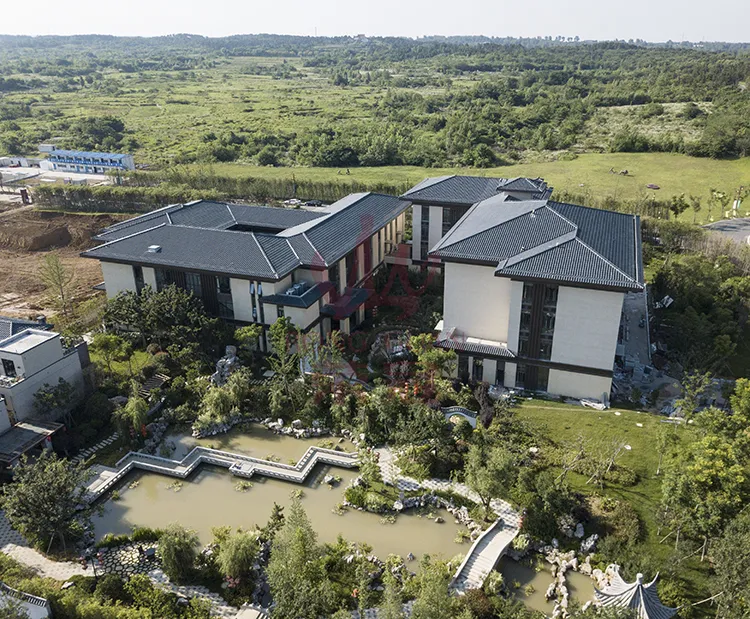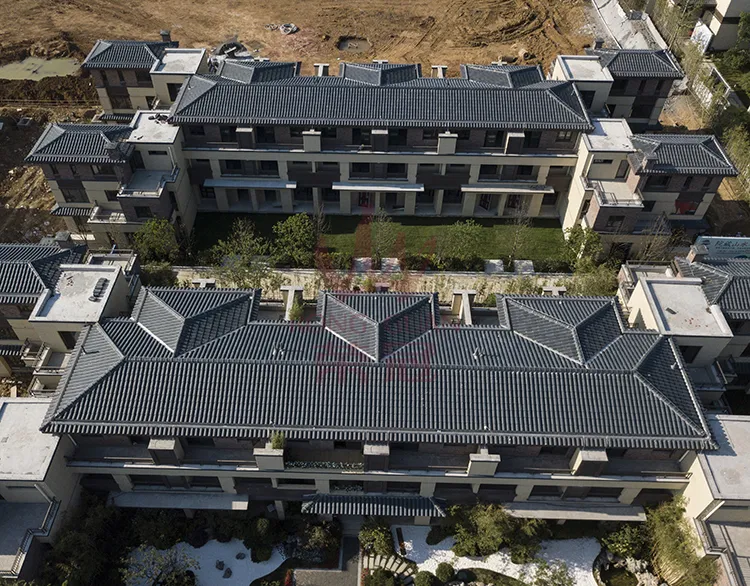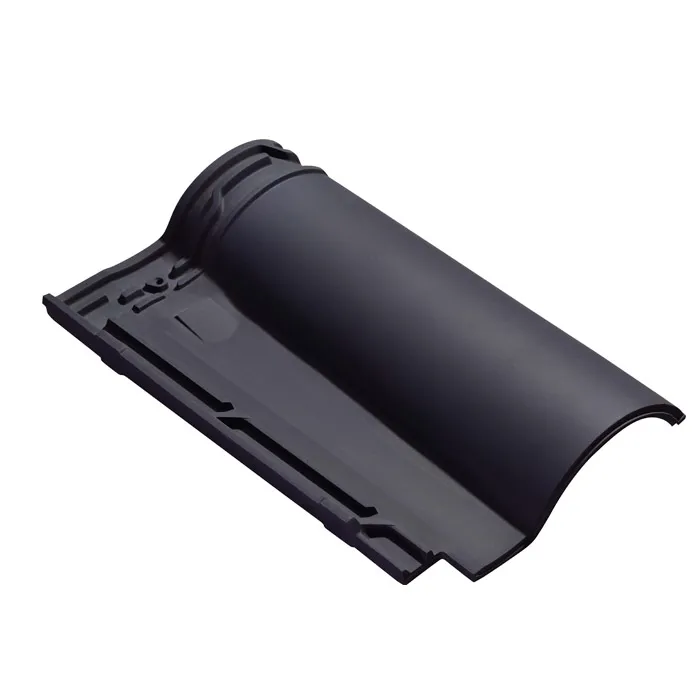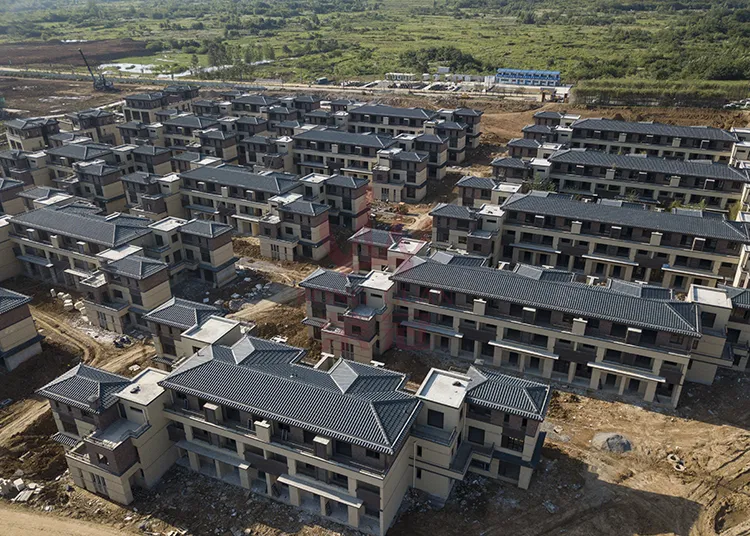Roman clay tiles roofs are widely used in residential, commercial buildings and historical sites around the world due to their unique beauty and durability. They are usually laid with clay tiles and form a solid protective layer on the roof. Many homeowners and builders choose Roman clay tiles roofs because they can not only withstand bad weather, enhance the aesthetic value of the building, but also have a long service life. However, regarding the waterproofness of Roman clay tiles roofs, many people often have doubts about whether they are completely waterproof.
Flashing, as a building material that enhances the waterproof ability of roofs, plays a vital role in modern roofing systems. It can effectively prevent water from penetrating into the house and protect the roof structure from moisture, corrosion, etc. So, will Roman clay tiles roofs leak without flashing? This article will analyze this issue from multiple angles to help readers have a more comprehensive understanding of the waterproof performance of Roman clay tiles roofs and the role of flashing in it.

What is the waterproof principle of Roman clay tiles?
First of all, we need to understand the basic structure of Roman clay tiles roofs and their waterproofing principles. Roman clay tiles (also known as Roman tiles or corrugated tiles) are made of special clay tiles, each with a distinct concave and convex shape. Clay tiles are usually laid in rows to form a covering layer, overlapping each other and closely combined.
● Waterproofing principle: The waterproofing effect of roman clay tiles is mainly achieved through its structural design. Since clay tiles themselves are wavy (i.e., they have a concave and convex shape), water flows along these ripples when flowing on the surface of clay tiles, preventing water from directly penetrating into the roof. In addition, the overlapping arrangement between clay tiles can also effectively prevent water penetration. When rain falls from above, it first contacts the top of the clay tiles, then flows along the path of the ripples to the edge of the clay tiles, and finally flows to the sides of the roof or the drainage system. In general, roman clay tiles roofs can effectively resist water penetration in most weather conditions.
However, in some extreme cases, such as strong storms, heavy snow melting, etc., the water flow may exceed the drainage capacity of the roof, resulting in water penetration or water accumulation.

Clay tiles: What is the role of waterproofing board?
Flashing (or waterproof membrane) is a special waterproof material used in building parts such as roofs and walls. It is usually made of polymers, rubber, plastics or other synthetic materials and has extremely strong waterproof performance. In the roof structure, flashing is usually installed between the base layer of the roof and the clay tiles to enhance the waterproof performance.
The main functions of flashing include:
● Provide an additional waterproof barrier: Flashing can effectively prevent water penetration, especially at the joints of clay tiles, to prevent water from penetrating into the roof structure.
● Enhance the overall waterproof performance of the roof: Even if the clay tiles are not arranged completely tightly, the flashing can fill the gaps between the clay tiles and provide additional protection.
● Reduce moisture damage to the roof structure: Flashing can prevent moisture from entering the interior of the roof structure and reduce corrosion or damage to structural materials such as wood and steel.
● Enhance the service life of the roof: By effectively waterproofing, flashing can effectively extend the service life of the roof and reduce the cost of repair and replacement caused by water penetration.
Flashing is often regarded as a standard configuration in modern buildings, especially in areas with heavy rain or high humidity. For a roof without flashing, its waterproof performance will be greatly reduced, especially in the case of long-term heavy rain.

Will a roman clay tiles roof without flashing leak?
To answer this question, we need to consider the following aspects:
● The waterproofness of the roman clay tiles roof itself: As mentioned earlier, the roman clay tiles roof provides a certain waterproof function through the overlap between the clay tiles and the wave form on the surface of the clay tiles. However, this waterproofness is not absolute, especially in extreme weather conditions, water may penetrate into the roof through the gaps between the clay tiles. Therefore, even if the roman clay tiles roof has strong waterproof ability, it may still leak due to gaps between the clay tiles, improper installation or local damage without flashing.
● The installation quality of clay tiles: The waterproof performance of roman clay tiles is closely related to its installation quality. If the clay tiles are not installed properly (for example, the gaps between the clay tiles are too large, the roman clay tiles are not overlapped tightly enough, and the fixing is not firm, etc.), even high-quality clay tiles will find it difficult to prevent water penetration. Therefore, during the installation process, it is necessary to ensure that the clay tiles are arranged in a standardized manner and overlap appropriately to avoid leaving gaps.
● Climate conditions: In dry and mild climates, the natural waterproofing ability of roman clay tiles roofs may be sufficient to cope with daily precipitation. However, in extreme weather conditions such as frequent heavy rains, snowmelt or storms, the flow and pressure of water increase, and the gaps between clay tiles may not be able to effectively block moisture. At this time, the role of flashing is particularly important, which can provide additional protection to prevent water from penetrating into the roof structure.
● Roof drainage system: In addition to the waterproofing ability of roman clay tiles themselves, the roof drainage system also plays a vital role in waterproofing. If the roof drainage pipes are unobstructed and the drainage capacity is strong, the water can be discharged from the roof surface in time, which can effectively avoid water accumulation and seepage. In the absence of flashing, a good drainage system can reduce the risk of water penetration.
● Additional protection of flashing: Although roman clay tiles themselves have a certain waterproofing ability, roofs without flashing are more vulnerable to moisture invasion. Flashing is usually installed under clay tiles, which provides an extra layer of protection to prevent water from penetrating into the roof structure when the clay tiles cannot drain out. Without flashing, even if the clay tiles are arranged tightly, leaks may still occur when the clay tiles are damaged or the gaps are large.

Will the roman clay tiles roof leak without flashing?
If the roman clay tiles roof is not flashed, the homeowner may face the following risks:
● Water penetration into the roof structure: Gaps between roman clay tiles may cause moisture to penetrate into the roof structure, especially in rainy seasons. Moisture seeping into roof materials such as wood or steel may cause corrosion, mold, structural damage and other problems, which in turn affect the safety and service life of the building.
● Long-term damage to the roof: Long-term water penetration will cause the aging of roof materials, wood may decay, and steel may rust, which will increase the cost of repair. Once the structure of the roof is damaged, it may require more large-scale repairs or replacements, adding additional financial burdens.
● Increased humidity in the house: When moisture enters the roof structure, it may cause increased humidity in the house, especially in cold seasons. Moisture can easily cause mildew, wood rot and other problems, affecting indoor air quality and residents' health.
Foshan Rongguan is a factory-direct supplier of premium quartz stone, artificial marble, and roof tiles. Our products combine exceptional durability with elegant design, catering to both residential and commercial projects. With over 30 years of industry experience and ISO-certified facilities, we deliver customized solutions at low wholesale prices. Request a quote now and enjoy exclusive sales discounts!

